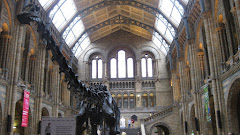Both Isambard Kingdom Brunel’s achievements and his faults seem to mirror those of his age. His capacity to dream for bigger and faster structures led to an awesome number of modern wonders, but it also led some failures on a Brunelian (i.e. enormous) scale. His optimism, his determination that humankind can overcome any obstacle with will and hard work, his enormous dedication, and the sheer scope of his imagination reflect the feel of his time, the early-to-mid Victorian age. This is an era of progress, of reform, and of excitement and hope for the future, where space could be conquered by railways and steamships and any obstacle bridged over or tunneled through. Unfortunately, Brunel and his time, hell-bent on improving the world, did not always think through the potential disadvantages of their new schemes, e.g. the maintenance of say, an enormous ship (Great Eastern) or grandiose madhouse (Colney Hatch). They were also shockingly dismissive, to modern sensibilities, of their plans’ human cost in suffering and in lives. Brunel viewed the men who died in making the first tunnel under the Thames (or any other river), or the two-mile long Box tunnel, or the 700 ft long Great Eastern as necessary evils to a “world’s first” engineering achievement. Of course, no one person can fully encapsulate all the multifarious feelings of their time, and some of Brunel’s traits, such as his economic impracticability, do not represent most early Victorians. Brunel’s time, the early to mid Victorian period, culminated, I think, in the Great Exhibition of 1851. Brunel died only eight years later, not living to see how many of the great dreams of the early Victorians, including his own ss Great Britain, were to be soiled by the passage of time, and their grand optimism replaced by the despairing sense that the world was not as they had hoped.
Sunday, 19 July 2009
Subscribe to:
Post Comments (Atom)

No comments:
Post a Comment